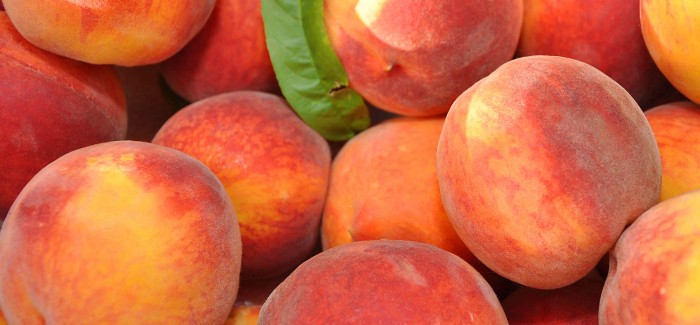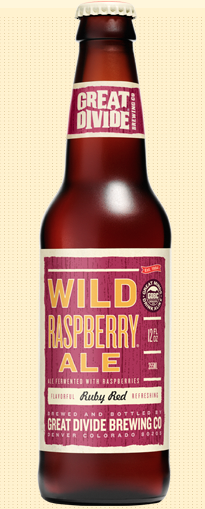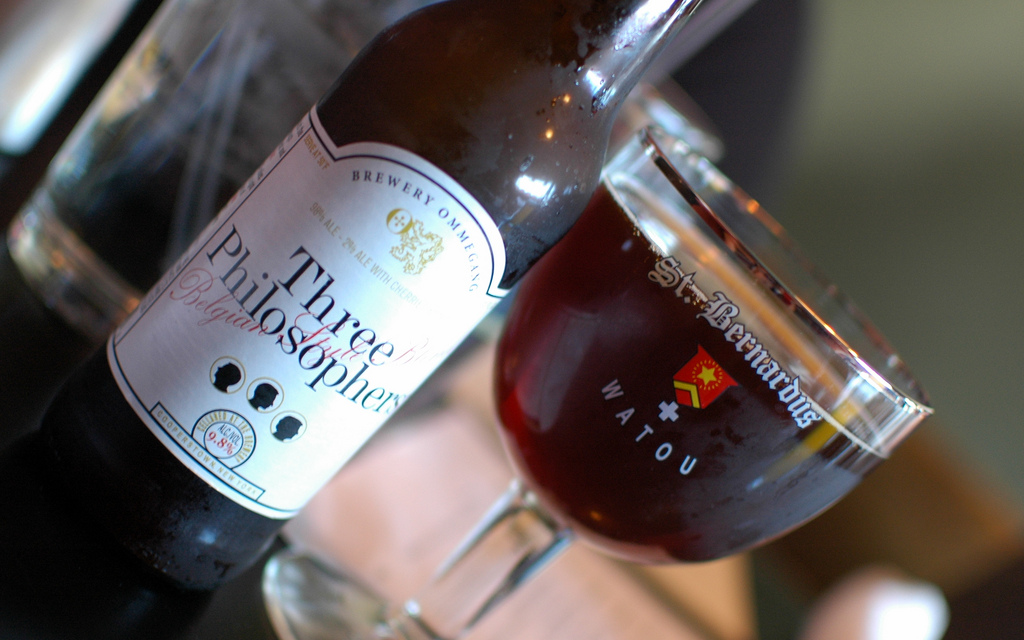Homebrewing: Brewing with Fruit
For many brewers like myself, brewing is a creative outlet. Water is the blank canvas on which we play with malt, yeast and hops. While many of the worlds best beers are made with those four ingredients, there are many avenues for furthering creativity. In this week’s post, titled Homebrewing: Brewing with Fruit, I will discuss the ways of imparting fruit flavors to your homebrew.There are a few ways of imparting fruit flavor into your beer. Of these methods I have tried adding fruit extracts, packaged fruit purees, fruit juice and fresh fruit. While fruit extracts offer an easy solution because they can be added at the time of bottling or right to the keg with little or no fruit mess or effort, I find that they often result in artificial flavors. Strawberry extract tastes more like pink Starburst candy and peach and grape extracts taste more like their real fruit counterpart with a side of cough medicine. Simply put, extracts have their place but when big fruit flavor and aroma is the objective, I would recommend steering away from extracts.
Packaged fruit purees, like ones provided by Oregon, are my third favorite option. They are easy, convenient and store well. Since the fruit puree is purchased canned or packaged, you don’t have to worry about spoilage. You can make your favorite fruit beer out of season! To keep these from spoiling, some fruit purees have preservatives or additional sugar syrups that impart unwanted flavors. I have made a few beers with fruit purees, most recently a Chocolate Raspberry Stout last winter. It turned out great and the raspberry flavor was subtle. If there were any fruit off-flavors from the packaged product, it was difficult to detect them against the dark roasted malt profile of the stout I aged them with. Overall I was pleased with the beer but have tasted a few other beers made with packaged fruit puree that I didn’t like. Besides, when it comes in a package, you have no idea if the fruit itself was picked at peak freshness or where the fruit came from. Blackberry puree doesn’t tell me if the fruit came from a wet climate like the Pacific Northwest, or a drier climate like the Rocky Mountains, and I can tell a difference in the flavor of the blackberries.
My second favorite option is fruit juice. If you focus on buying good fruit juice that is not from concentrate and has no additional sugar added you can make wonderful fruit beer. Make sure to check the ingredients! Even packages claiming “100% Fruit” often have Potassium Sorbate added. The other major benefit of fruit juice is that its just simply the juice. There is no fruit skins or seeds to deal with or worry about when bottling or kegging. Fruit juice also imparts the flavor instantly. While I recommend giving it some time for the flavors to melt together, fruit juice is a tasty and quick addition.
By far and away my favorite option is raw fruit. While this takes more time and more patience to remove the fruit particulate, I highly recommend it its the flavor you’re going for. When buying your fruit fresh, you can ensure that the quality and ripeness of the fruit you purchase is the flavor profile that you want in your beer. I also like to choose organic and locally sourced fruit whenever possible. I generally add my fruit into the fermenter, so a lack of pesticides and other chemicals or waxes on the fruit skin is preferred. Keep the skin in tact since doing so will allow the meat of the fruit something to hold onto and make for easier beer transfer later. I like to pick my fruit at its most ripe, almost on the border of over ripe, as this is when it is the juiciest. I have had luck with cutting and freezing my fruit a few days before brew day which has helped to kill any bacteria living on the skins and opens up the cells in the fruit to help transfer juice from the fruit. I have heard of other brewers blanching their fruit to ensure that the outsides are free of bacteria before cutting them up and adding them to the beer. I like to thaw the fruit before adding it to my fermenter, or if it’s the summer time, I will often just add the fruit directly to the fermenter and help to cool my wort to pitching temperature. If you’re especially concerned about bacteria in your recipe (not necessarily a bad thing, “wild” bacteria such as brettanomyces found on the skins of overly ripe fruit are a regular part of beautiful lambics) add your fruit to a secondary fermenter or after the beer has been fermenting a few days. Alcoholic environments are a tough place for bacteria to live and adding fruit to a secondary can help alleviate your bacterial concerns.
Fruit can be added in either the primary or secondary fermenter, but if you use fresh fruit, I have had best results allowing the beer to sit on the fruit for 4-6 weeks. Don’t be afraid to use a lot to impart a noticeable fruit flavor, I suggest adding one to two pounds of fresh fruit per gallon of wort. Doing so will obviously require more volume in your fermenter, so make sure you have enough head space.
Late summer and early fall is a great time to find excellent fresh fruit, namely peaches, blackberries, apples, pears and many other tree fruit. Talk to farmers are your local farmer’s market or grocer and ask about “seconds”. Seconds are the fruit that fall off the tree or vine and are bruised or not visually appealing. These fruits are often at their ripest point and wont be seen in your beer anyways, not to mention it will often save you 50% on your total fruit purchase.
Try brewing a fruit beer, or adding fruit that will compliment another style. Today I brewed my annual Colorado Harvest beer with fresh peaches from Ela Family Farms in Hotchkiss Colorado. I like to brew 10 gallons (with 20 pounds of fresh peaches) and split the batch. Last year I fermented half of the batch with a saison strain that I gave to my dear friends to serve at their wedding and soured the other half. Have fun Brewing with Fruit!







Submit a Comment